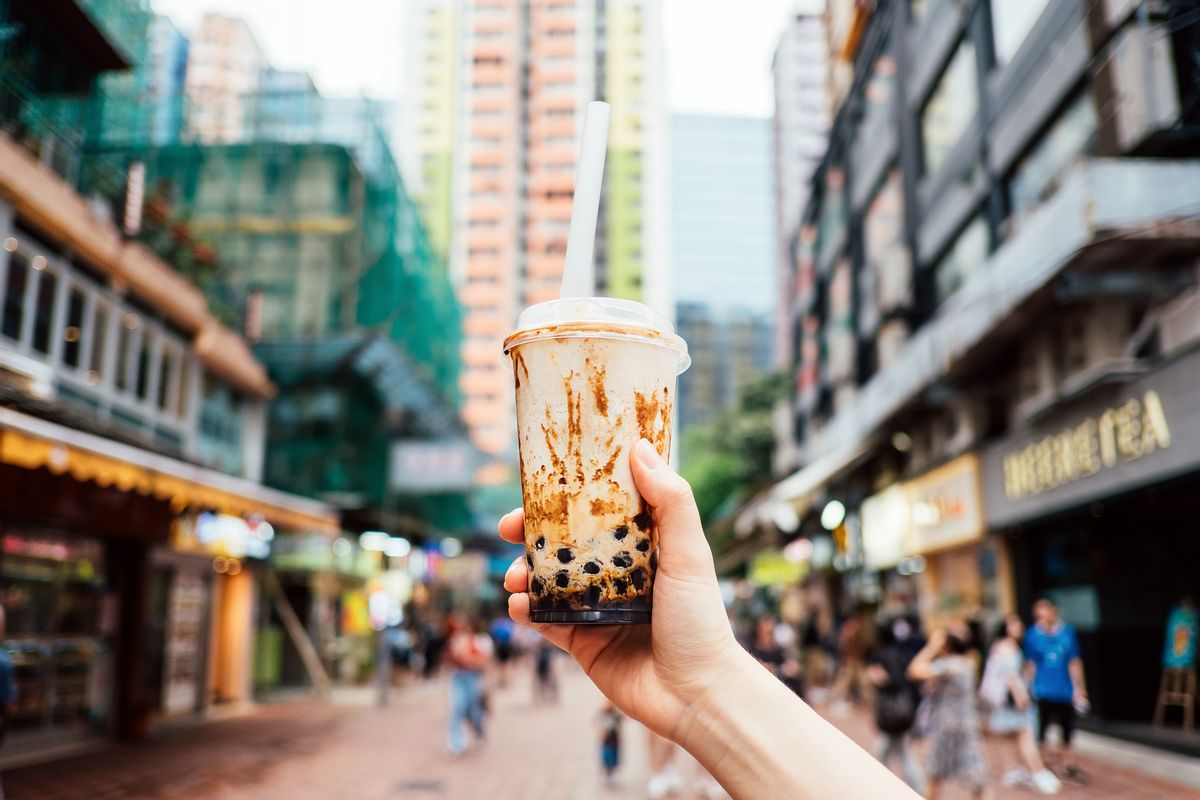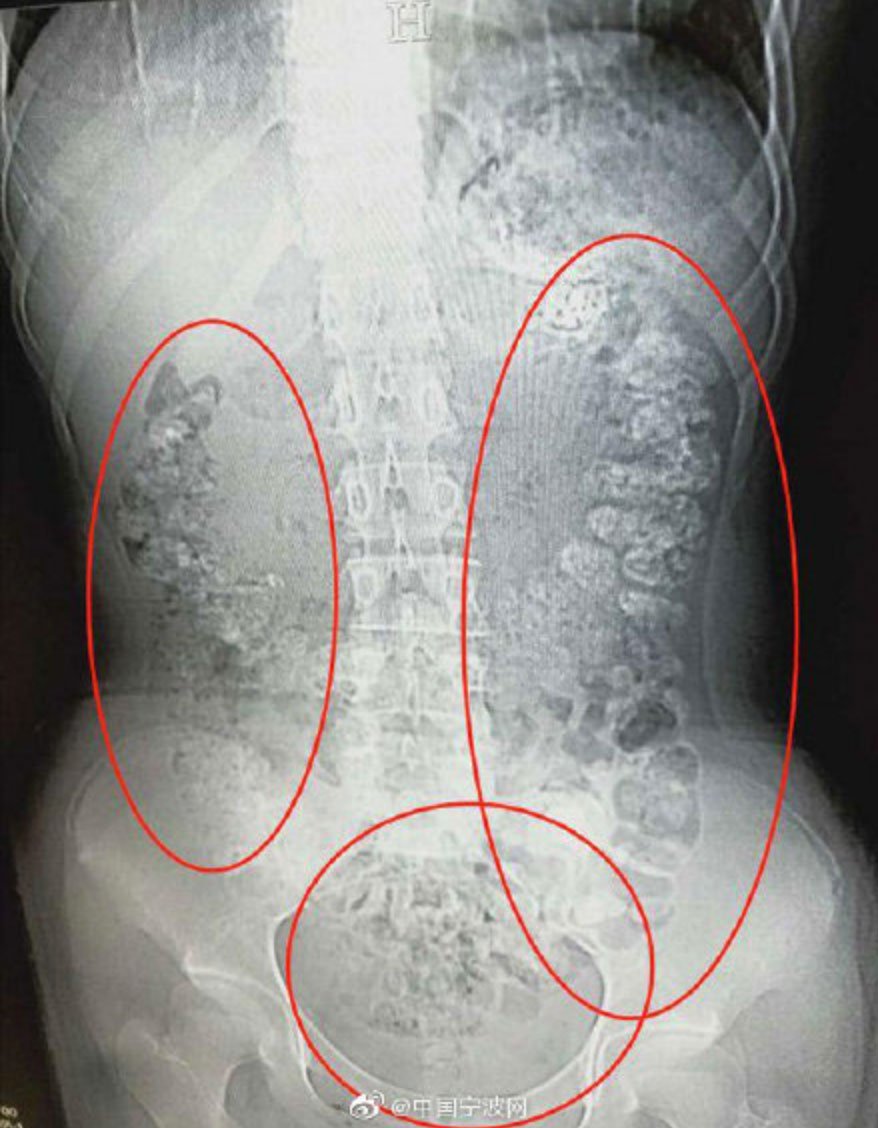In June 2019, an X-ray image supposedly showing hundreds of bubble tea pearls in a 14-year-old girl started circulating on social media:
Bubble tea, also known as boba, is a Taiwanese tea-based drink filled with chewy "pearls" that are typically made from tapioca. The above-displayed image supposedly revealed hundreds of such pearls in the teen's stomach.
The image was originally published in Chinese-language news outlets such as Shaoxing News and The Paper in early June 2019. Here's an excerpt from an English-language report published in Asian One:
The girl, who lived in Zhejiang province, complained of being constipated, not being able to eat, and was suffering from stomachaches. According to Chinese media reports, her parents finally sent her to the hospital on May 28.
Unable to find the cause of her digestive issues, a CT scan was performed, where doctors found many unusual spherical shadows in her abdomen.
Doctors deduced that the shadows were actually around a hundred undigested tapioca pearls from bubble tea she had consumed.
Despite the credible origins of this story, many viewers (and a few doctors) were skeptical about what this image showed. The experts who weighed in on the matter were less concerned with whether the image was doctored (we saw no red flags to indicate that this X-ray was digitally manipulated) and more curious about how tapioca pearls showed up on the CT scan.
Dr. Lina Felipez, a pediatric gastroenterologist at Nicklaus Children's Hospital in Miami, told Live Science that tapioca balls certainly could cause constipation. However, Felipez noted that tapioca, and even common additives such as guar gum, wouldn't show up on a CT scan:
Eating a lot of tapioca balls could "for sure" cause constipation, said Dr. Lina Felipez, a pediatric gastroenterologist at Nicklaus Children's Hospital in Miami, who wasn't involved in the girl's case.
Tapioca is a very starchy food that's mostly made of carbohydrates. By itself, tapioca likely wouldn't cause significant constipation, Felipez said. But the balls typically contain other additives that can contribute to constipation. In particular, an additive called guar gum may play a role in causing digestive issues — guar gum is a fiber that helps hold the balls together and makes them stickier. Guar gum also expands when it comes in contact with water, Felipez said ...
However, what’s puzzling is that tapioca, guar gum and other ingredients typically used in tapioca balls in the U.S. would not show up on a CT scan. These ingredients aren't "radiopaque," meaning they don't show up on X-rays or CT scans, Felipez said. That's because these ingredients do not block the type of radiation used in X-rays. (Instead, they allow the radiation to pass through, and thus remain invisible on X-rays.)
Dr. Vladimir M. Kushnir, an associate professor of medicine at Washington University and a spokesman for the American Gastroenterological Association, had a similar opinion. Kushnir told us via email that if this X-ray truly showed bubble tea pearls, they likely contained an additional additive uncommon in the United States:
(The image) shows a colon distended with at least several hundred (if not more) small round objects ... possibly “bubbles” from boba tea ...
It’s possible (that these splotches are bubble tea pearls) given the shape, but my suspicion is that they contained some additional additive (not used in U.S.) to show up on the X-ray so well. This patient clearly consumed an exorbitant number of bubble tea pearls.
This X-ray is authentic and appears to show at least a hundred bubble tea pearls blocking the digestive tract of a 14-year-old girl in China. What these particular bubble tea pearls were made of, however, is unclear. It's possible that they contained some sort of inedible material. Reports exist of unsafe additives being found in boba pearls over the years, as the Wall Street Journal reported in 2013:
Since mid-May, Taiwanese health authorities have confiscated more than 312 tons of food starch – a key ingredient in bubble tea – that was found to have been tainted with maleic acid, a cheap food additive that can cause kidney failure when consumed in large doses.
The toxic starch has also poisoned Taiwan's food exports. On Wednesday, Malaysia announced an immediate ban on 11 food items imported from Taiwan. Singapore imposed similar ban over the weekend.
This is the second island-wide food scare in two years after the discovery of the pervasive use of plasticizer -- a chemical additive to use to make food more pliable -- in May 2011.
While this image may be real, it doesn't show a common result of drinking bubble tea. This X-ray appears to show an extreme case involving an excessive amount of bubble tea and boba pearls possibly made with unsafe additives.
Kashnir added: "I would reassure readers that 1-2 glasses of bubble tea are perfectly safe."


